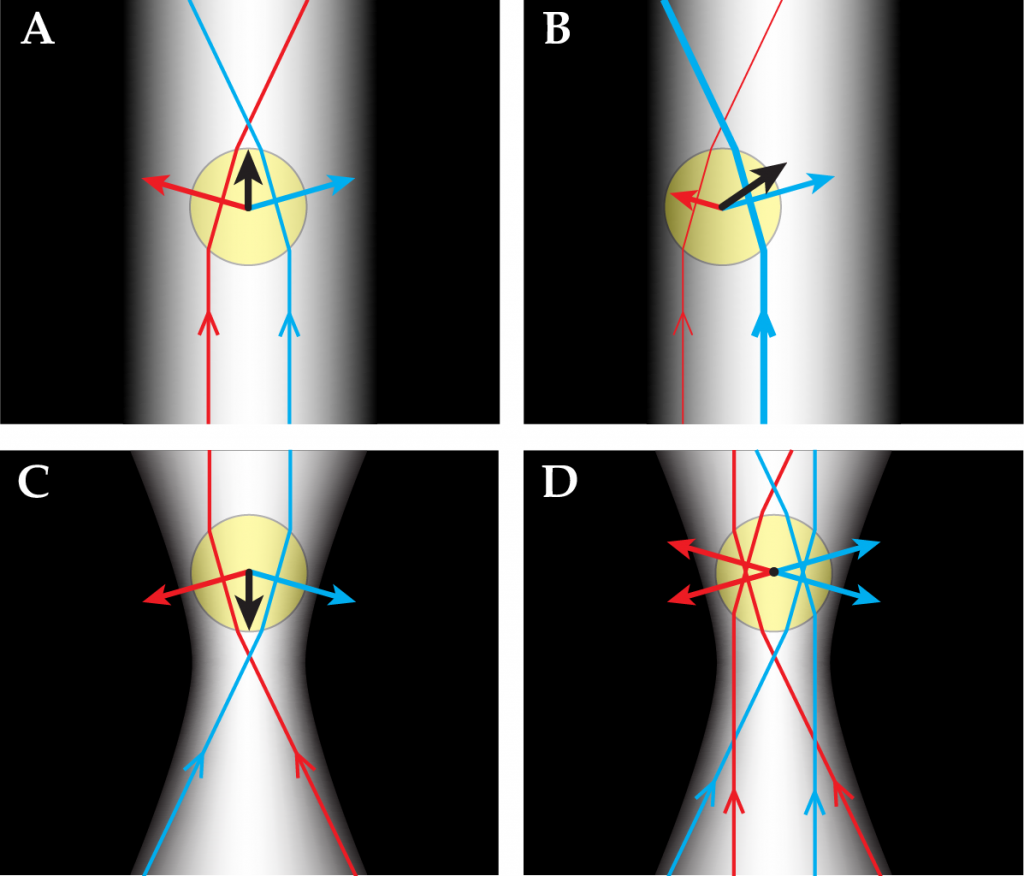A focused light beam can trap a small particle, such as a micron-sized latex sphere (or biological cell). If the sphere is much larger than the light’s wavelength, ray optics suffices to explain the trapping.
Light bends as it passes through the sphere, as in Fig. A. The piconewton forces (red and blue arrows) on the sphere are equal and opposite to the rate of momenta transferred to the light rays: the rays deflect one way, and the sphere deflects the opposite way. The net force (black arrow) is longitudinal and pushes the bead along the beam. A beam that is less intense at its edge nudges a laterally offset sphere back towards its center, as in Fig. B. A focused beam pulls a sphere behind the focus toward the focus, as in Fig. C. The push in Fig. A stabilized by the nudge in Fig. B balances the pull in Fig. C to hold the sphere just behind the focus, as in Fig. D: a Nobel Prize hiding in plain sight.

Microsphere in a light beam: Fig. A push stabilized by Fig B nudge balances Fig. C pull to trap sphere
A single Nobel Prize cannot be awarded to more than three people and cannot be awarded posthumously. Arthur Ashkin developed optical tweezers in the 1970s and 1980s. Over 20 years ago his collaborator Steven Chu shared the Nobel Prize with Claude Cohen-Tannoudji and William Phillips for trapping atoms. This year at age 96 Ashkin receives the Nobel Prize for his optical tweezing pioneering.


